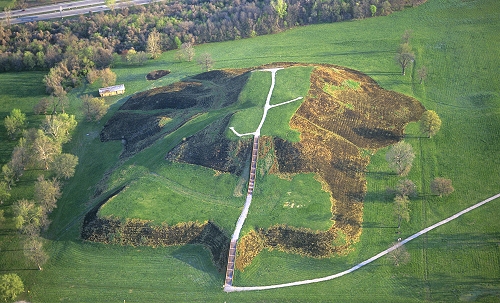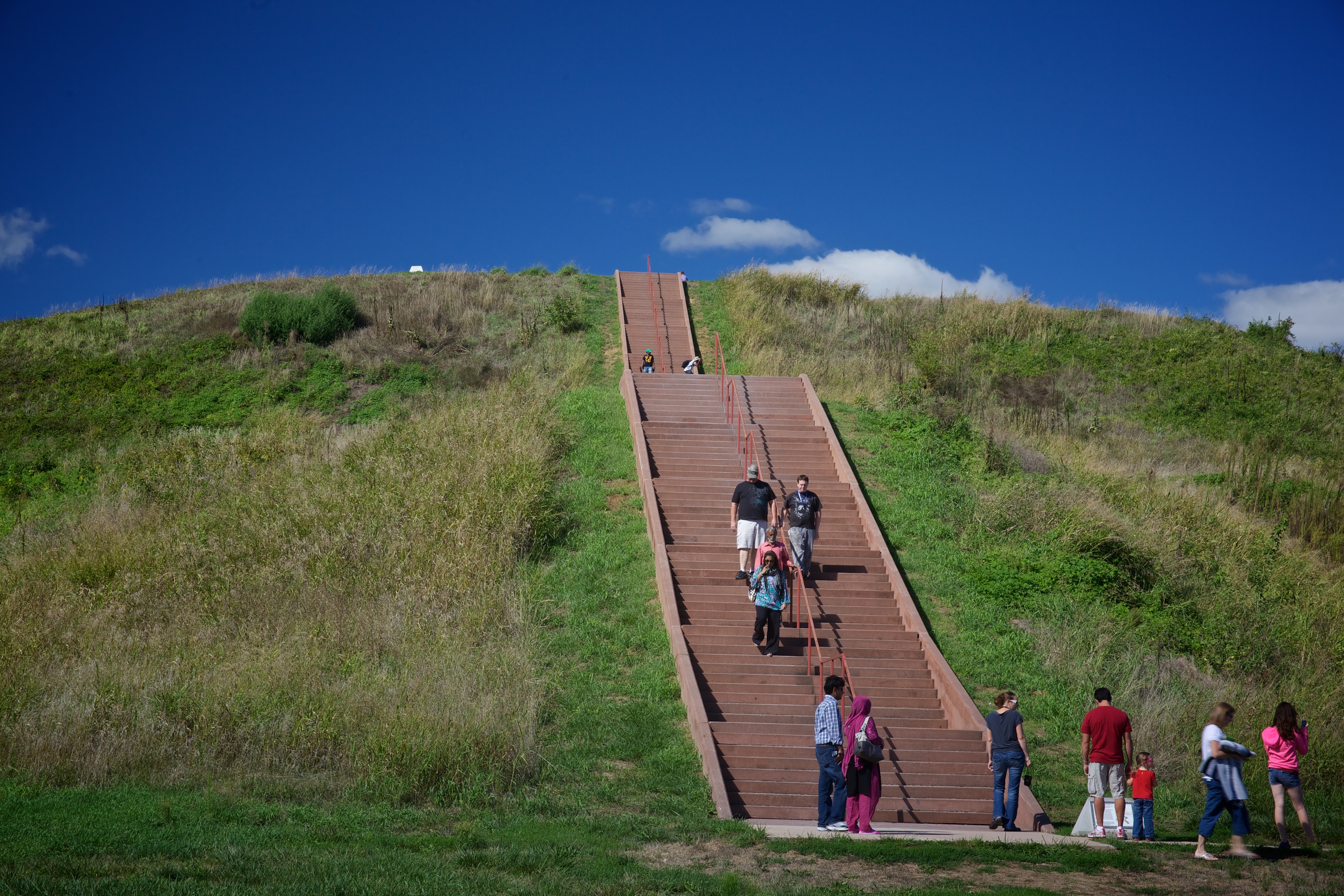When most people think of St Louis, The Arch, the blues, BBQ, and maybe hockey come to mind. But did you know that the St Louis region is home to one of the most important archaeological sites in North America?
Located a few miles directly across the Mississippi River from modern St. Louis, Missouri, you’ll find a series of mysterious mounds, the largest rising some 220 feet into the air.
Welcome to the world-renowned Cahokia Mounds.
Advanced and Peaceful
These Mounds got their name from the Cahokia tribe, which was a tribe of Illiniwek people who lived in the area when in the 17th Century the first French explorers arrived there.
At it’s height the Cahokia population in the area to be between 10 and 20 thousand people and was a peaceful agricultural, and Chiefdom led societies that were common in many of the Indian Tribes in the Midwest region. While it’s been surmised that the hamlets and villages fanned out many miles, the massive mounds were located at the center.
Representing one of the most complex remains of the northern Pre-Columbian the area was settled in the Mississippian period from 700 – 1400 AD. The expansive site covers about 9 square kilometers or 3.5 square miles which is equal to 2200 acres or 890 hectares. With 80 mounds, the site is massive, but the actual ancient city was in fact much larger than this area.
When it was occupied, the Cahokia Mounds had almost 120 mounds and covered an area of approximately 1600 hectares or 3950 acres. and width of this mound it is 30m tall, 290m length, and 255m wide respectively.

The Cahokia Were Coppersmiths
In 2002 till 2010 because of the excavation near mound 34, a copper workshop was revealed in this area. Originally discovered by archaeologist Gregory Perino in the 1850s but its exact location was lost or forgotten for around 60 years. While there are other Mississippian sites as well that can be found in the U.S, what makes this site different from all those historic sites is the fact that it contains a copper workshop, which the other sites do not have.
Protected Status
Realizing the significance of the site, the Cahokia Mounds were first protected by the Illinois state in 1923, the same year when the legislature announced that the state park would be purchased. The state government in turn designated the Cahokia Mounds and a State Historic Site in 1979 and is a designated site for protection, and also a National Historic Landmark. Finally in 1982 the Cahokia Mounds State Historic Site was included in the list of the 23 UNESCO World Heritage Sites in the United States.
The Illinois Historic Preservation Division administers the site since it is open to the public site and the Cahokia Mounds Museum Society supports the site. The central focus of the city and also the largest structure of the Cahokia Mounds is the Monks Mound.
The Monks Mound is 10 stories tall, with four terraces and hence it becomes the largest man-made mound on earth located at the north of Mexico.



